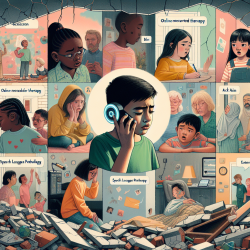Understanding the Impact of Natural Disasters on Children's Mental Health
Natural disasters can leave a lasting impact on the mental health of survivors, particularly children. A follow-up study on the Sichuan earthquake in China provides valuable insights into the prevalence of mental health issues such as anxiety, depression, and PTSD among children one year after the disaster. This research is crucial for practitioners working with children affected by trauma, as it highlights key risk factors and suggests interventions that can mitigate long-term psychological effects.
Key Findings from the Sichuan Earthquake Study
The study involved 330 children from grades 3 to 5, who were assessed six months and one year after the earthquake using the Trauma Symptom Checklist for Children-Alternate Version (TSCC-A). The findings revealed that:
- The prevalence rates for anxiety were 23.3% at six months and 22.7% at one year.
- Depression rates were 14.5% at six months and 16.1% at one year.
- PTSD rates increased from 11.2% at six months to 13.4% at one year.
These statistics indicate that mental health issues can persist and even worsen over time, underscoring the need for continuous support and intervention.
Risk Factors and Implications for Practitioners
The study identified several key risk factors for mental health issues among children post-disaster, including:
- Initial exposure to death, bereavement, and extreme fear significantly predicted anxiety, depression, and PTSD.
- Children in higher grades (4 and 5) exhibited more symptoms compared to those in grade 3, suggesting a schooling effect rather than an age effect.
For practitioners, these findings highlight the importance of early identification and intervention for children exposed to traumatic events. Tailoring therapeutic approaches to address specific risk factors can improve outcomes and help children recover more effectively.
Actionable Insights for Practitioners
Based on the study's findings, practitioners can enhance their therapeutic strategies by:
- Implementing targeted interventions for children who experienced significant trauma, such as bereavement or witnessing death.
- Providing ongoing support and monitoring for children in higher grades who may be more susceptible to mental health issues post-disaster.
- Utilizing data-driven assessments like the TSCC-A to evaluate and track symptoms over time, allowing for more personalized treatment plans.
By focusing on these areas, practitioners can better support the mental health needs of children recovering from natural disasters.
To read the original research paper, please follow this link: Mental Health Problems among Children One-Year after Sichuan Earthquake in China: A Follow-up Study.










